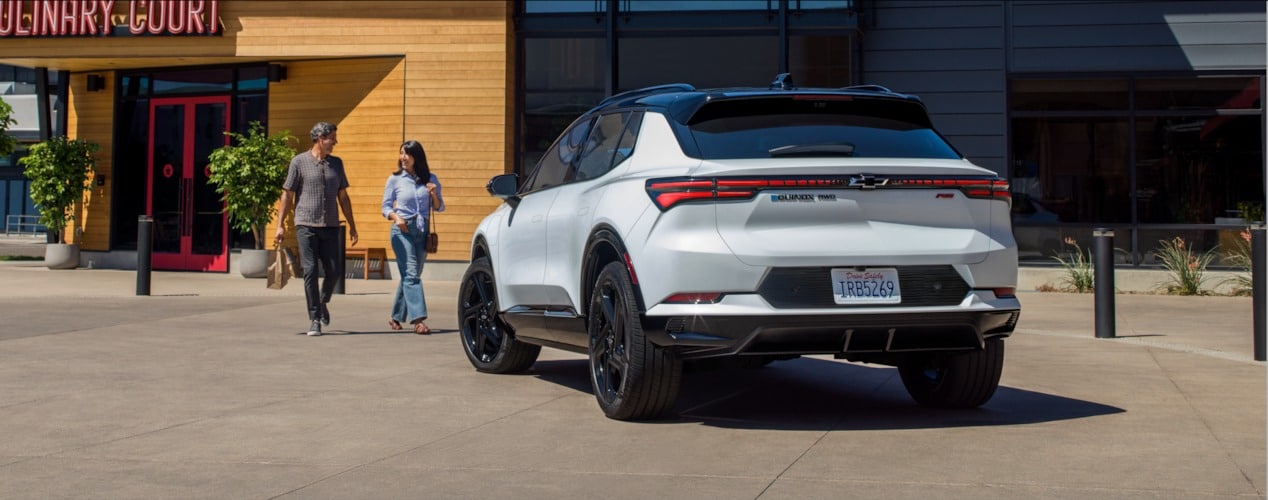

If you're a High Desert commuter, you tackle challenges that most car shoppers don't even consider, including scorching summers that hit 107 degrees Fahrenheit, surprise cold winter mornings, and the reality of driving dozens of miles each way to jobs in Los Angeles or San Bernardino. Choosing between the Chevrolet Equinox EV, an electric vehicle (EV), and its gas-powered sibling is about finding what works for your daily life in one of California's toughest driving spots.
Performance and Driving Experience
The 2026 Chevrolet Equinox EV has three available models: the LT1, LT2, and RS. The LT2 generates 220 hp and 243 lb-ft of torque with immediate electric power that changes how your commute feels. Gas engines build power gradually, but electric motors jump to life instantly, something you'll notice as you merge onto I-15 or pass slower traffic on Highway 18. This quick response really shines during early morning drives when you need to zip through busy High Desert intersections.
In the Imperial Valley, where summer temperatures climb above 100 degrees Fahrenheit for more than 100 days a year, EVs can use 25% to 28% more energy than in milder conditions due to air conditioning and battery cooling demands. Gas engines fight their own battles with overheating, faster fluid evaporation, and quicker tire wear. Winter brings different challenges — tests show that cold weather can significantly affect EV battery life and range, with some studies showing battery power reduced by 30% or more.
Electric motors run quieter, which is a big plus during long Los Angeles commutes. Less noise means less fatigue after highway driving. Both SUVs handle our desert hills well, though the EV's regenerative braking system puts power back into the battery when you're coming down from the mountains. If you haul work gear or camping equipment, both have similar towing capacity, but the EV's instant power makes pulling loads feel more stable.
Range and Refueling Convenience
The Equinox EV's 319-mile range tackles the biggest concern most High Desert commuters have about going electric. This range easily covers the 85-mile drive to Los Angeles, 148 miles to San Diego, or even 188 miles to Las Vegas with room to spare for air conditioning usage and unexpected detours. You'll likely start each day topped off from home charging, eliminating rushed morning gas stops that eat into your commute time. Charging stations are available in numerous Victorville locations, and they can routinely be found at hotels, restaurants, and grocery stores. More options are coming as Victorville's charging network grows.
Gas stations still win for convenience for now, with familiar options throughout the High Desert and along commute routes. This matters most for surprise road trips or when you forget to plug in overnight, although home charging means never starting work with a low tank, unlike gas-powered vehicles.
Southern California Edison charges nearly double the national average for electricity. With the Equinox EV's estimated ratings of 117 MPGe in the city, 100 MPGe on the highway, and 109 MPGe combined, you'll pay roughly $18 for a home charge versus $15-$30 at public stations. Yearly maintenance for EVs costs about $949 as opposed to $1,279 for gas-powered vehicles.
Technology and Comfort Features
The technology in these models shows their different approaches. The gas Equinox comes with a standard 11-inch driver information display plus an 11.3-inch color touch screen with Google Built-In and physical buttons that many drivers prefer. The gas version also includes standard safety systems such as automatic emergency braking, forward collision alerts, and lane-keeping assist, with adaptive cruise control available on higher trims.
The Equinox EV boasts an expansive 17.7-inch touch screen, touch controls, and a digital dash showing real-time power data. The larger screen is invaluable on long drives, displaying detailed routes and power usage. Super Cruise hands-free driving, rear pedestrian alerts, and intersection automatic emergency braking are either standard or available on the EV, potentially cutting driver fatigue during long desert drives.
Space and comfort show small but important differences. The EV sits on a longer 116.3-inch wheelbase with 41.7 inches up front for legs and 38 inches in back, while the gas model's 107.5-inch wheelbase offers 40.9 inches of front and 39.9 inches of rear legroom. Cargo space favors the gas version, though — it has 29.8 cubic feet behind the seats and 63.5 cubic feet with the seats down compared to the EV's 26.4 and 57.2 cubic feet. If you haul work equipment or family gear regularly, this might influence your choice.
Your actual driving habits should guide your choice between the gas-powered and electric Equinox. The gas Equinox still wins if you take frequent unplanned road trips, prefer traditional fill-ups, or lack reliable home charging. Its bigger cargo area also helps families or workers hauling larger items.
Making the Right Choice for Your Victorville Commute
For personalized advice, visit our Victorville Chevrolet dealership to test drive both options and chat with our friendly team about financing, incentives, and local charging options. We know High Desert driving better than anyone and can help you find what fits your daily commute best. Call us at 760-684-4818 to set up your test-drive. We're ready to help you find the right Equinox for your Victorville life.